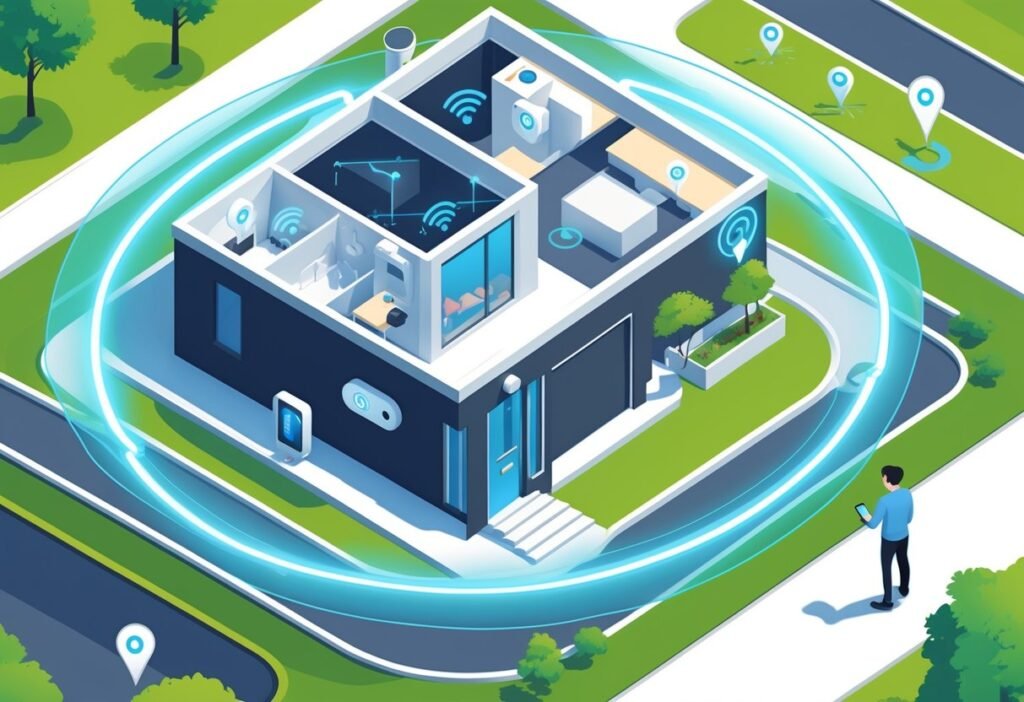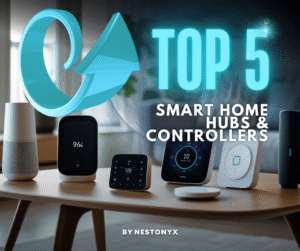As an Amazon Associate, we may earn a commission if you make a purchase — at no extra cost to you.
Smart Home Geofencing: Location-Based Tricks & Automation Ideas
Smart home geofencing makes Alexa, Google, and HomeKit smarter. Use arrival/departure routines and phone location triggers to save energy and boost security.
Smart home geofencing makes your house respond automatically to where you are—no taps needed. You can set arrival/departure routines so lights switch on, doors lock, and the thermostat adjusts. Whether you search for geofencing smart home, Alexa routines, or Google Home presence sensing, the setup is beginner-friendly. In this guide, we’ll show beginner-friendly location-based automations for Alexa, Google Home, and Apple HomeKit, plus accuracy, battery, and privacy tips. Whether you search for smart home geofencing or geofencing smart home, the steps are the same—and they’re easy. Start with a few quick wins, then copy our ready-made routines to save energy and add hands-off comfort.
📍 Why Geo-Fencing Can Change Your Smart Home Forever
Too many smart home devices stay underutilized. This post helps you unlock a powerful automation tool—geo-fencing—that can make your routines smarter, save energy, and improve home security.
🧠 What You’ll Master About Geofencing in Smart Homes
- Understand how geo-fencing works in a smart home
- Discover practical automations for when you arrive or leave home
- Explore compatible apps and devices that support geo-fencing
- Get tips on improving accuracy and avoiding common pitfalls
Choose your ecosystem, grab the deal, and start automating in minutes.
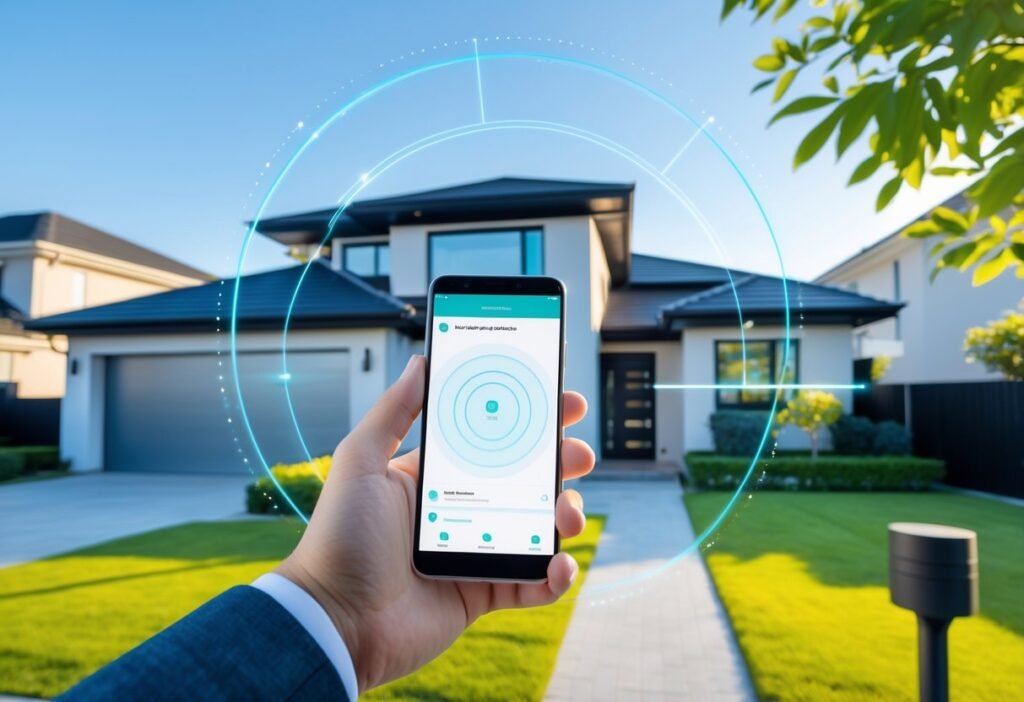
Smart home geofencing (or geofencing smart home automation) works by creating a virtual boundary around your house using your phone’s location. Step in or out of that zone, and lights, thermostats, locks, or cameras can trigger instantly—this is often called a phone location trigger in Alexa, Google Home, and HomeKit. More and more folks want their homes to just “know” what to do—Alexa, Google Home, and even iOS have made this pretty simple. With alexa geofencing, automation becomes even more intuitive. The integration of alexa geofencing into your smart home system enhances convenience and efficiency.
Ever wished your house would warm up before you got home, or shut things down as soon as you left? Geo-fencing is a surprisingly easy fix. In this review, I’ll run through how it works, why it’s useful, some common worries about battery and privacy, and what actual users have to say—so you can figure out if geo-fencing fits your home life.
By leveraging alexa geofencing, you can create automated tasks that respond to your movement, making your living experience smarter and more enjoyable.
Using alexa geofencing, you can ensure your home is always ready for you as you arrive or leave.
Smart Home Geofencing: How Location-Based Routines Work
Geo-fencing lets you set up virtual boundaries that trigger your smart home gadgets when you come or go. If you’re using Alexa, Google, or iOS, it’s a pretty slick way to streamline your daily routine and make life just a bit more comfortable, efficient, and secure.
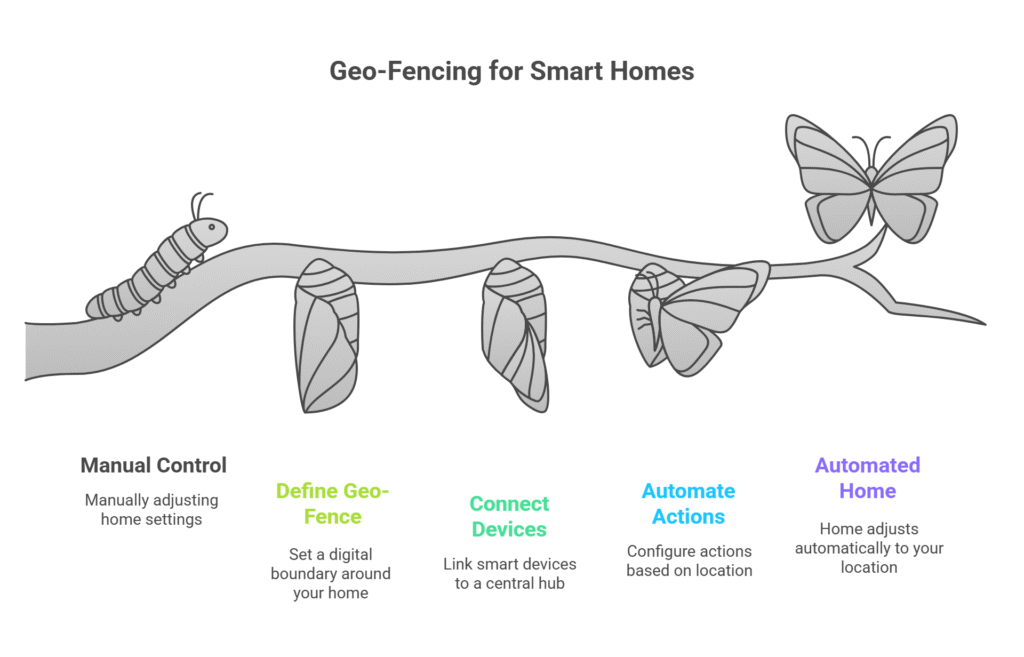
Benefits: Energy Savings, Security, and Hands-Off Comfort
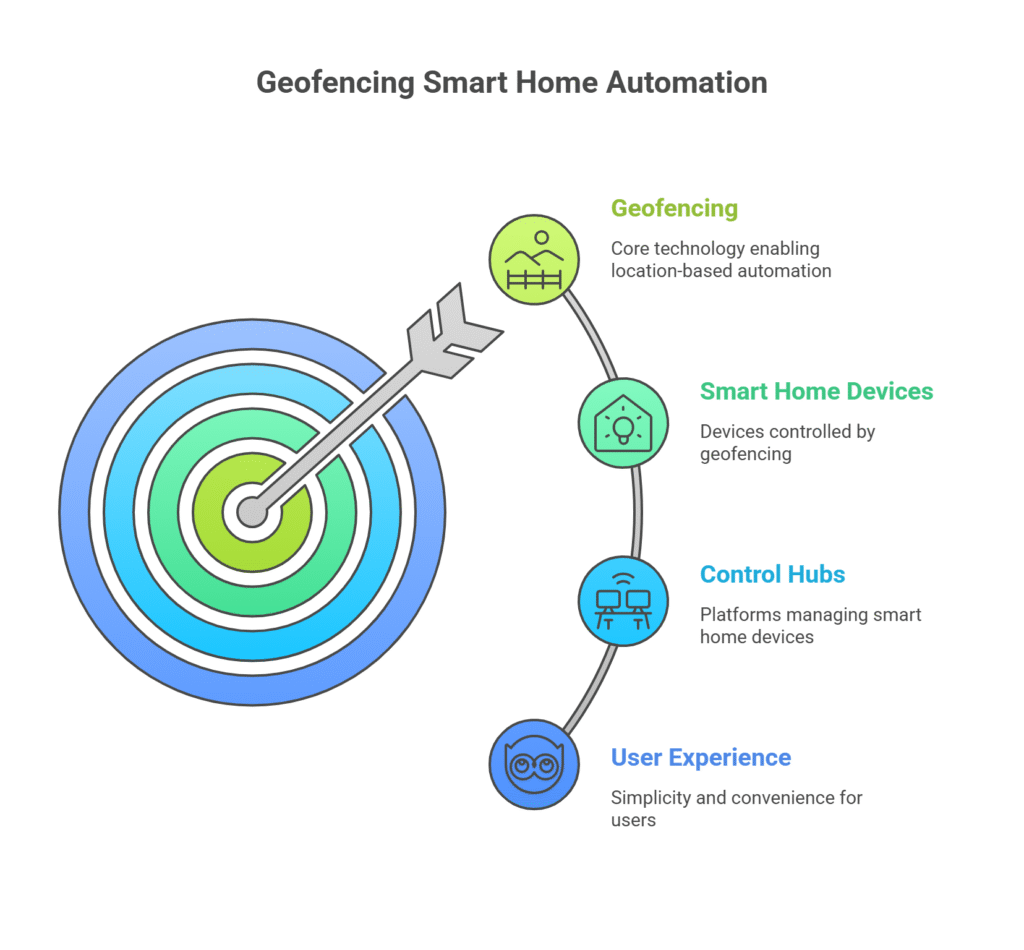
Basically, geo-fencing is a techy way to draw a digital line around your house. When your phone moves in or out of this area, it can trigger stuff like lights, locks, or the thermostat—whatever you’ve set up in advance.
This automation runs on GPS or Wi-Fi signals from your phone. In smart home geofencing setups, you control routines through platforms like Google Home geofencing, Alexa geofence triggers, or HomeKit geofencing. Each platform lets you choose what happens when you leave or arrive. These connect to your lights, locks, plugs, alarms—so things just happen as you come and go.
Because geo-fencing does its thing quietly in the background, you don’t have to keep fiddling with switches or apps. It’s all about keeping things simple.
- Voice control: Kasa smart plugs that work with Alexa and Google Home Assistant. Enjoy the hands free…
- Smart Outlet Control from anywhere: Turn electronics on and off your smart home devices from…
- Scheduling: Use timer or countdown schedules to set your wifi smart plug to automatically turn on…
Last update on 2025-11-12 / Affiliate links / Images from Amazon Product Advertising API
Reason for selection: Perfect for automating lamps, coffee makers, or fans as you come/go. Works with Alexa & Google Home geo-fencing routines.
🚫 Alexa Geofencing Examples: Arrival & Departure Routines
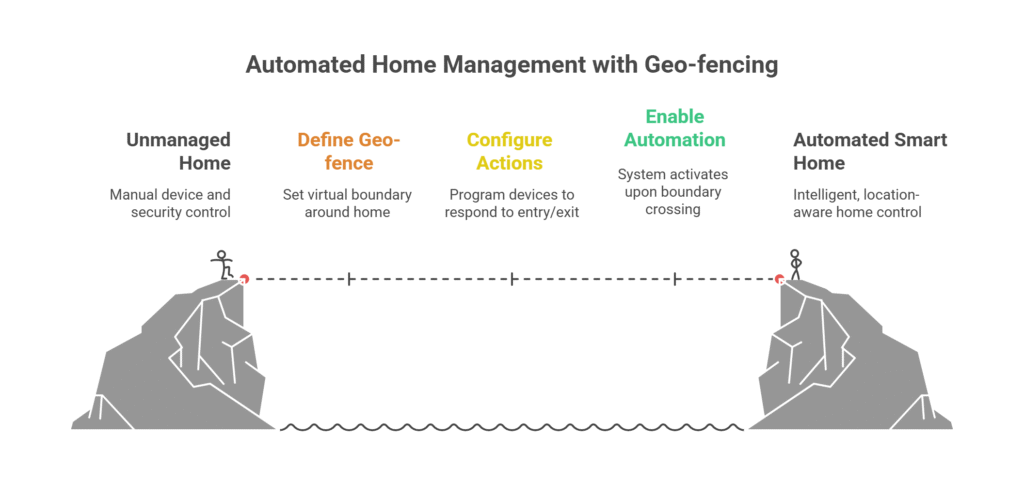
Ever left home and realized you forgot to turn something off? Geofencing smart home automation fixes that by running leave-home routines that power down plugs, lights, or HVAC automatically. With Alexa geofence triggers or Google Home “Away” mode, your home instantly switches into energy-saving mode.
It’s also great for those times you walk into a cold, dark house. Geo-fencing can warm things up and turn on the lights before you even reach the door. Security gets a boost, too—doors can lock and alarms arm themselves as you head out, so you’re not left second-guessing if you locked up.
- UPGRADE YOUR EXISTING DEADBOLT: August smart locks fit on the inside of your door, making your…
- GRANT ACCESS WITH THE AUGUST APP: Forget key copying. Quickly and easily share permanent, scheduled…
- EASY TO INSTALL ON ANY DOOR: Even if you’re not so handy, installation only takes about 10…
Last update on 2025-11-12 / Affiliate links / Images from Amazon Product Advertising API
Reason for selection: Best-in-class smart lock with auto-lock/unlock via geo-fencing. Works with Apple HomeKit, Alexa, Google Assistant.
If you’ve got kids or a hectic schedule, this stuff is a lifesaver. Parents can get alerts when their kids get home, or set cameras to turn on when the house is empty. It just takes a few small tasks off your plate and makes life a bit less stressful.
Ready to Automate Your Arrival/Departure Routines?
Stop wasting energy and start enjoying hands-off comfort. These devices are geofencing-ready and work with Alexa, Google Home, and HomeKit:
Get the Best-Selling Smart Lock →👨👩👧👦 Is Geofencing Smart Home Automation Right for You?
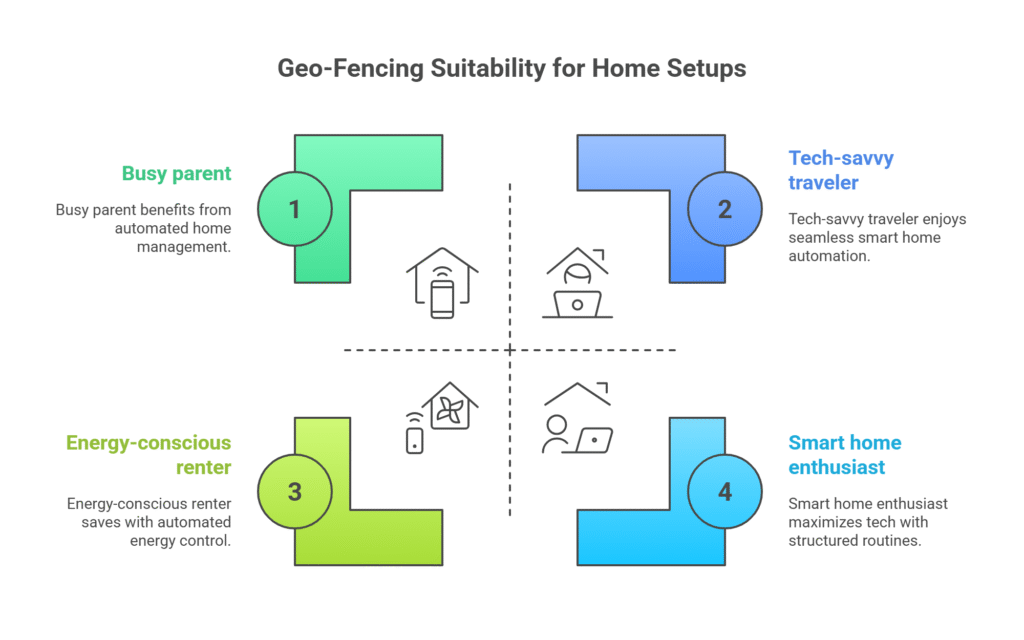
Geo-fencing is honestly a good fit for anyone who wants a smarter, more hands-off home.
Busy families, frequent travelers, or anyone who geeks out over smart home tech will probably love it. If your schedule is all over the place, or you’ve got kids, it’s especially useful. It’s also a smart move if you care about saving energy—no more heating or lighting an empty house.
If you’re shopping around for smart home gear, geo-fencing is one of those features that really stands out. It works with Apple HomeKit geofencing, Google Home, Alexa—you name it. Whether you rent or own, as long as your devices and phone support location stuff, you’re good.
If you hate complicated setups, don’t worry—most smart home apps make it pretty straightforward. You don’t need to be a tech whiz. Geo-fencing is for anyone who just wants things to work without a lot of hassle.
✨ Best Location-Based Ideas: Lights, Climate, Locks, and Plugs
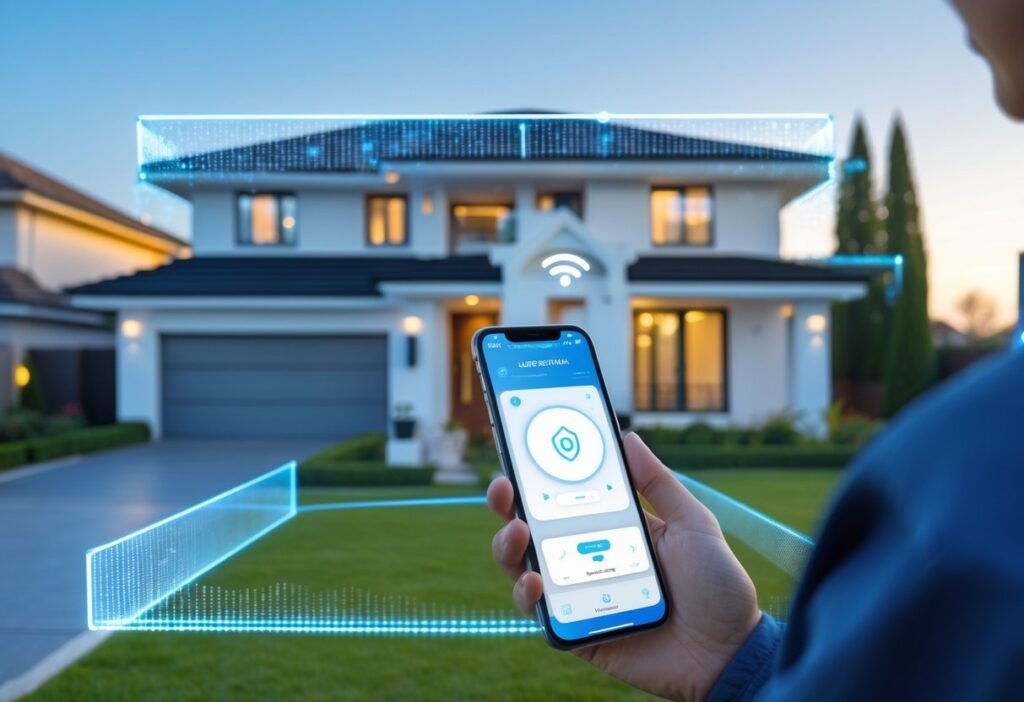
Geo-fencing lets your smart home adjust settings based on where you are, in real time. So, lights turn off, heat adjusts, or security arms itself—all without you having to remember.
💡 Examples You Can Copy: Turn On Lights, Auto-Lock, Pre-Heat/Cool
With geo-fencing, you can set up your home to handle the basics. Lights come on when you walk in, and turn off when you leave. That means no more coming home to a dark house, or wasting electricity.
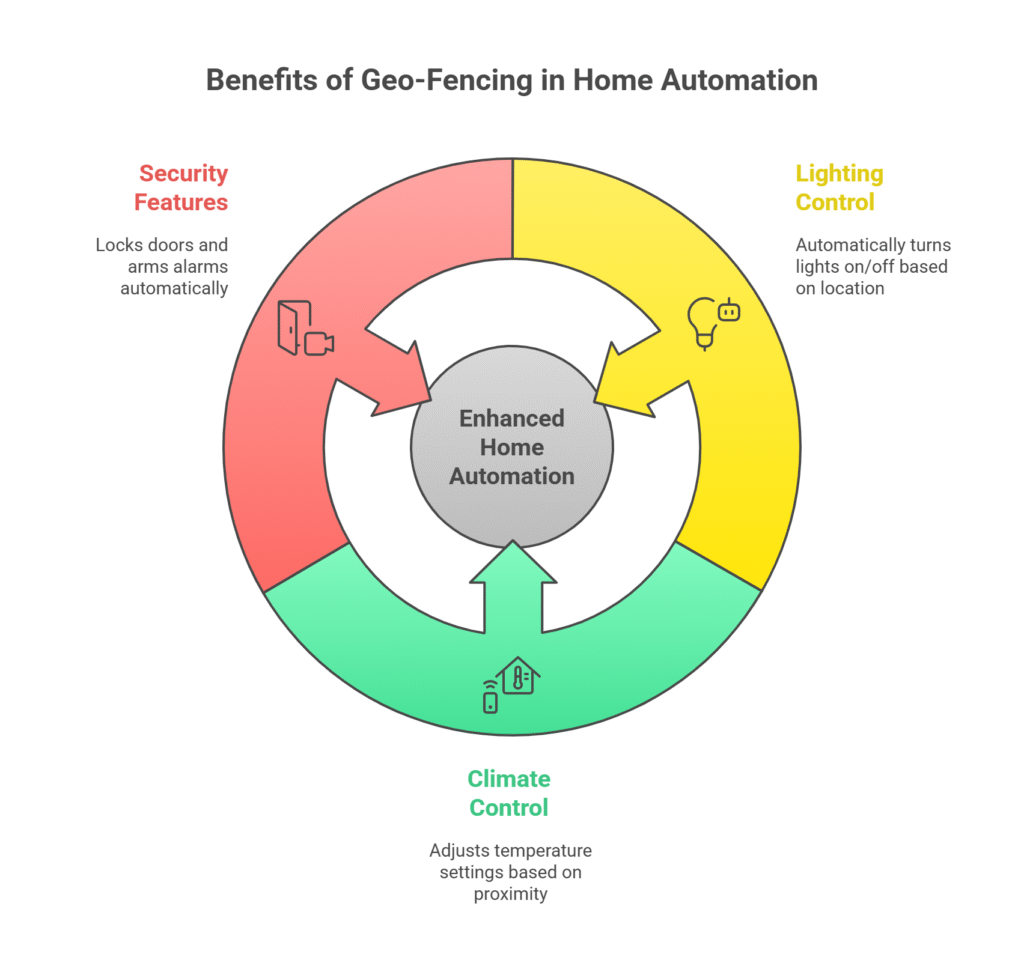
- WHAT’S IN THE BOX – Includes one Hue Bridge, one Dimmer Switch, and two Hue white and color…
- UNLOCK THE FULL POWER OF HUE WITH INCLUDED BRIDGE – Enjoy automations, control from anywhere in the…
- MILLIONS OF COLORS – The White & Color Ambiance range offers both warm-to-cool white and millions of…
Last update on 2025-11-12 / Affiliate links / Images from Amazon Product Advertising API
Reason for selection: Compatible with HomeKit, Alexa, and Google Home. Geo-fencing-ready lighting—turns lights on/off based on location.
Same goes for heating and cooling. Thermostats can kick in when you’re close by, so you’re not paying to heat or cool an empty place. That can save you a bit of cash over time.
Security is a big win here, too. Doors can lock as you leave, cameras can switch to “away” mode, and alarms can arm themselves. It’s the kind of “set it and forget it” stuff that’s perfect if you’re always on the move.
- Save up to 23% every year on heating and cooling costs, adjusts to your set schedule to save energy…
- Compatible with 85% of systems, check your system’s compatibility with our online ecobee…
- Change your temperature by easily tapping the color touchscreen or using the ecobee app. Plus, free…
Last update on 2025-11-12 / Affiliate links / Images from Amazon Product Advertising API
Reason for selection: Integrates with Siri/Alexa/Google. Supports scheduling + geo-fence triggers to auto-adjust temp when you arrive/leave.
⚙️ Alexa Geofencing Setup: Routines, Triggers & Tips
How to Create Alexa Geofence Routines That Work:
Setting up smart home geofencing is straightforward. On Alexa, you create geofence triggers tied to your phone’s location. Google Home calls these Home & Away routines, while HomeKit geofencing runs automations whenever your iPhone enters or leaves. Together, these options make location-based automation simple for beginners.
Google Home vs Alexa Geofencing: Key Differences:
Google Home has “Home & Away” routines for all your linked devices.
Apple HomeKit vs Alexa Geofence: Which Fits You?:
Apple’s Home app lets you set up automations that work whenever your iPhone crosses a certain line. You can even customize triggers for different people in your house. Usually, it’s just a few taps in the app—no coding or tech headaches. With HomeKit geofencing, iPhone users can create secure automations that trigger lights or locks. Some guides also call this a HomeKit geofence.
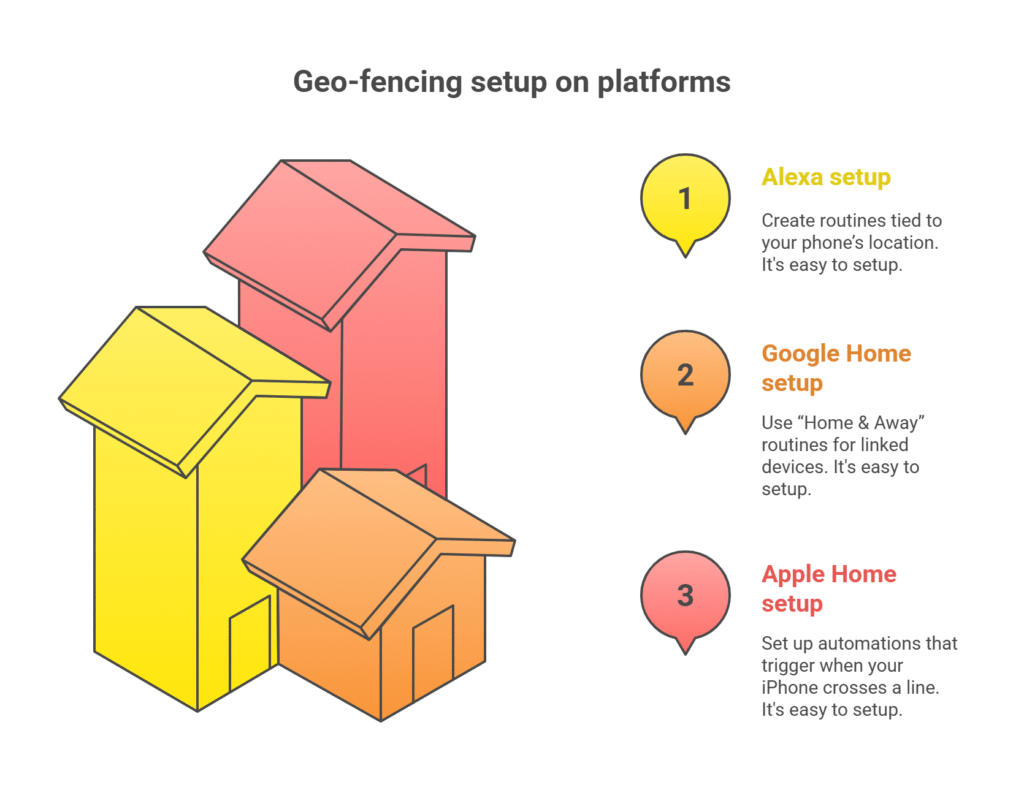
Most devices these days support it, but double-check that your gear and phone are compatible. Some features need GPS on all the time. These are sometimes called phone location triggers, since your smart home reacts when your phone crosses a set boundary.
🔋 Make It Reliable: Battery-Save & Privacy Settings That Matter
Now, a heads-up: using your phone’s location all the time can drain your battery faster, especially if you’ve got a bunch of automations running. Some apps are better about saving battery by using Wi-Fi instead of GPS, but your mileage may vary.
Privacy is another key factor with smart home geofencing. Since platforms like HomeKit geofence automation or Google presence sensing rely on location data, it’s important to adjust app permissions. Choosing the right setup ensures geofencing smart home routines remain secure without draining your battery. Most let you control who has access, but it’s worth checking your app permissions and settings.
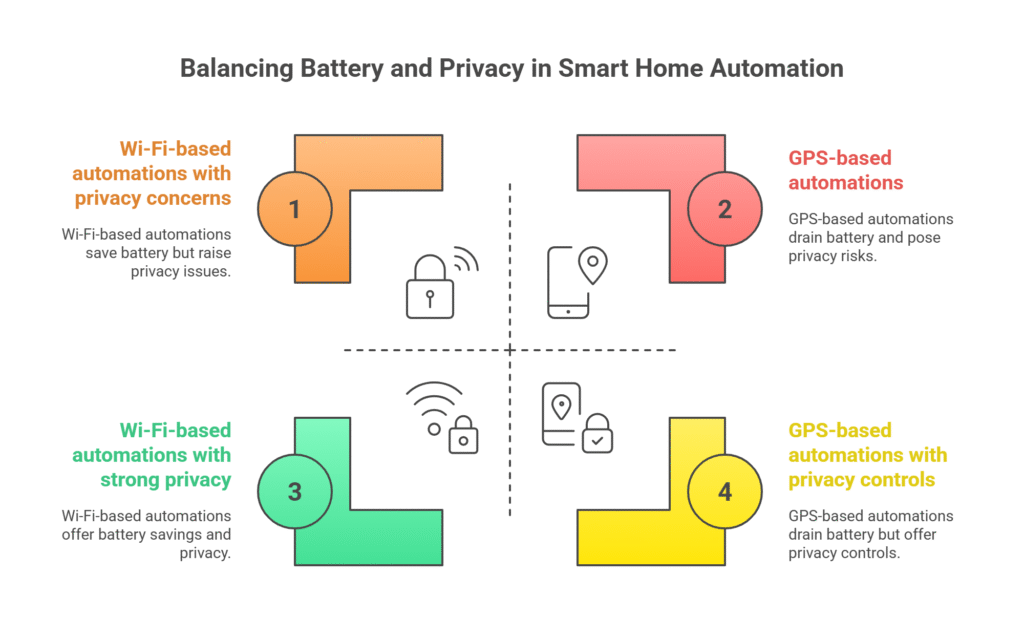
Not every device gives you tight privacy controls. If privacy is a big deal for you, read the fine print and tweak your settings. Sticking with well-known brands that keep their privacy practices up to date is the safer bet.
📊 What Users Say: Reliability, Missed Triggers, and Quick Fixes
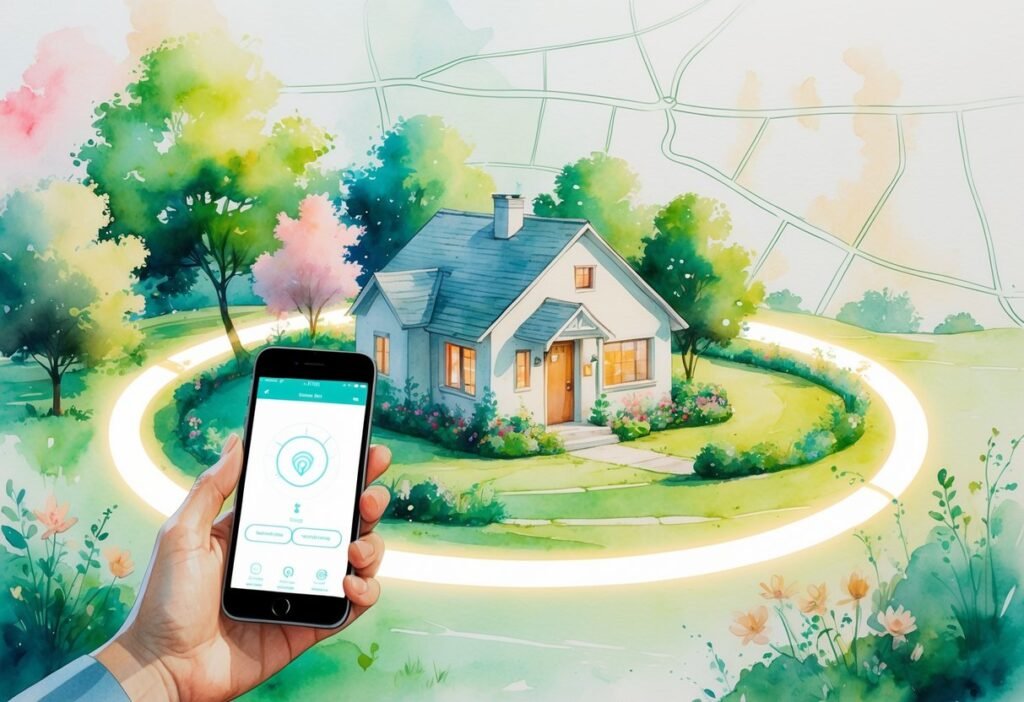
Smart home geofencing is designed to make life easier and safer. Reviews show that most people rely on arrival/departure routines for lights and locks, and they like how Alexa geofence triggers or Google Home geofencing respond without extra effort. Privacy and battery use are the top concerns, but most agree the benefits outweigh the trade-offs.
🏠 Real-Life Geo-Fencing Scenarios That Actually Work
In daily life, geo-fencing really does make a difference. When you get home, your smart lights can pop on by themselves, which is great when it’s dark out. Heating or AC can kick in just as you’re arriving, so you’re not wasting energy (or money) when no one’s around.
On the security side, geo-fencing can arm or disarm cameras and alarms based on where you are, so you don’t have to remember to set anything. Families use it to get alerts if someone comes or goes unexpectedly. Most folks set this up through Alexa, Google Home, or Apple HomeKit—it’s not rocket science.
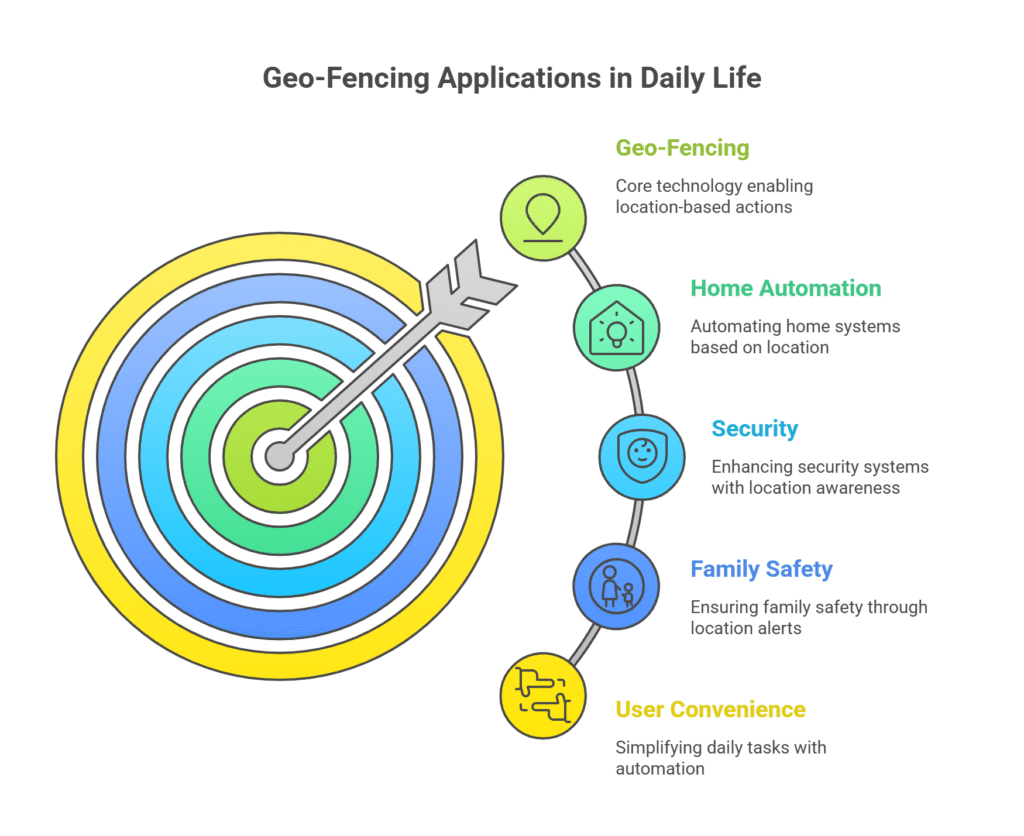
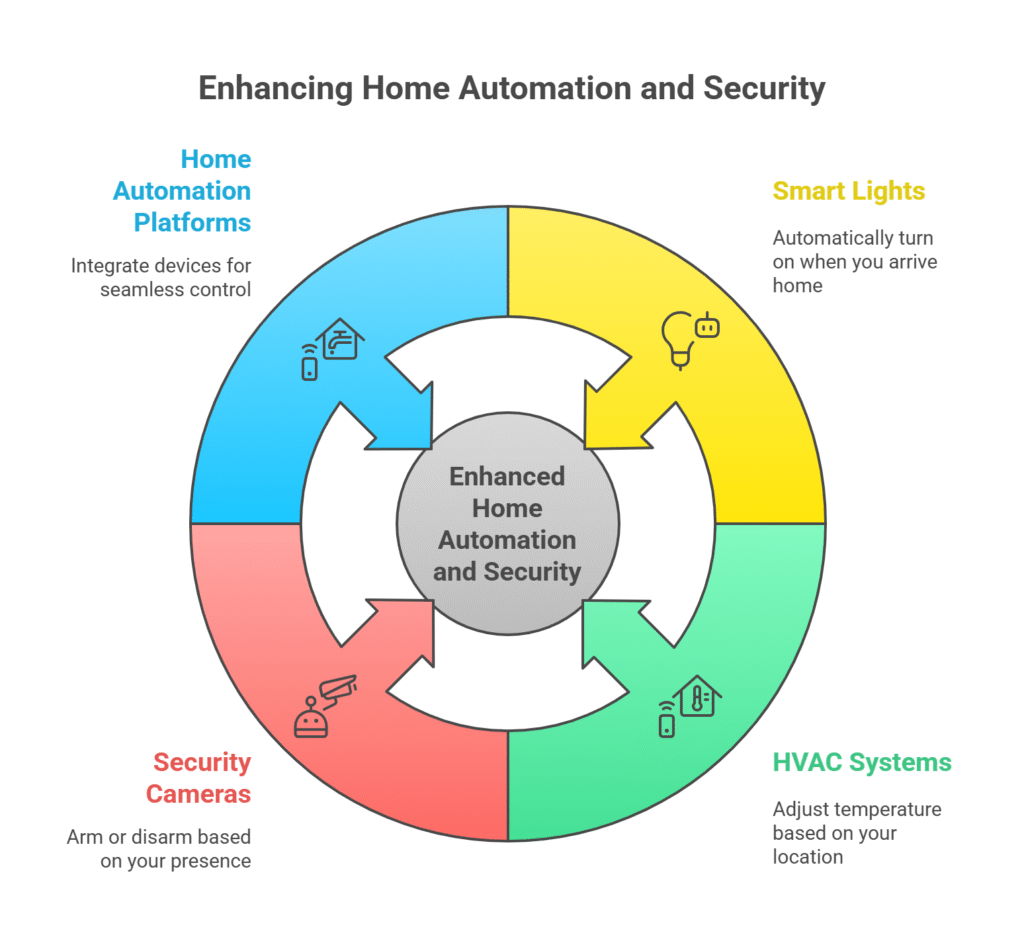
- See A Bigger Picture – The Security Camera Has A Wide 160° Diagonal Viewing Angle Lens For Auto…
- 2K Video With Hdr – Capture Clearer Details – The Wireless Outdoor Security Cameras With Advanced…
- Integrated Spotlight – Light Up The Night – Ward Off Unwelcome Guests With The Outdoor Camera Using…
Last update on 2025-11-12 / Affiliate links / Images from Amazon Product Advertising API
Reason for selection: Smart outdoor cam with built-in geo-fencing modes to arm/disarm based on your phone’s location.
🗣️ What Users Really Think About Geofencing Smart Home Automation
Reviews are mostly positive. People love the convenience and peace of mind. Setup is usually described as easy, and folks like how well it works with voice assistants and smart gadgets.
Here’s how the ratings usually break down on Amazon and similar sites:
- 5-star reviews: About 65%
- 4-star reviews: Around 20%
- 3-star and below: 15%
People mention saving energy and feeling more secure as the big wins. The downsides? Sometimes automations don’t trigger, or your phone battery takes a hit. Privacy comes up, but most users like being able to tweak who sees their location.
Good customer support and clear app dashboards get shoutouts, too.
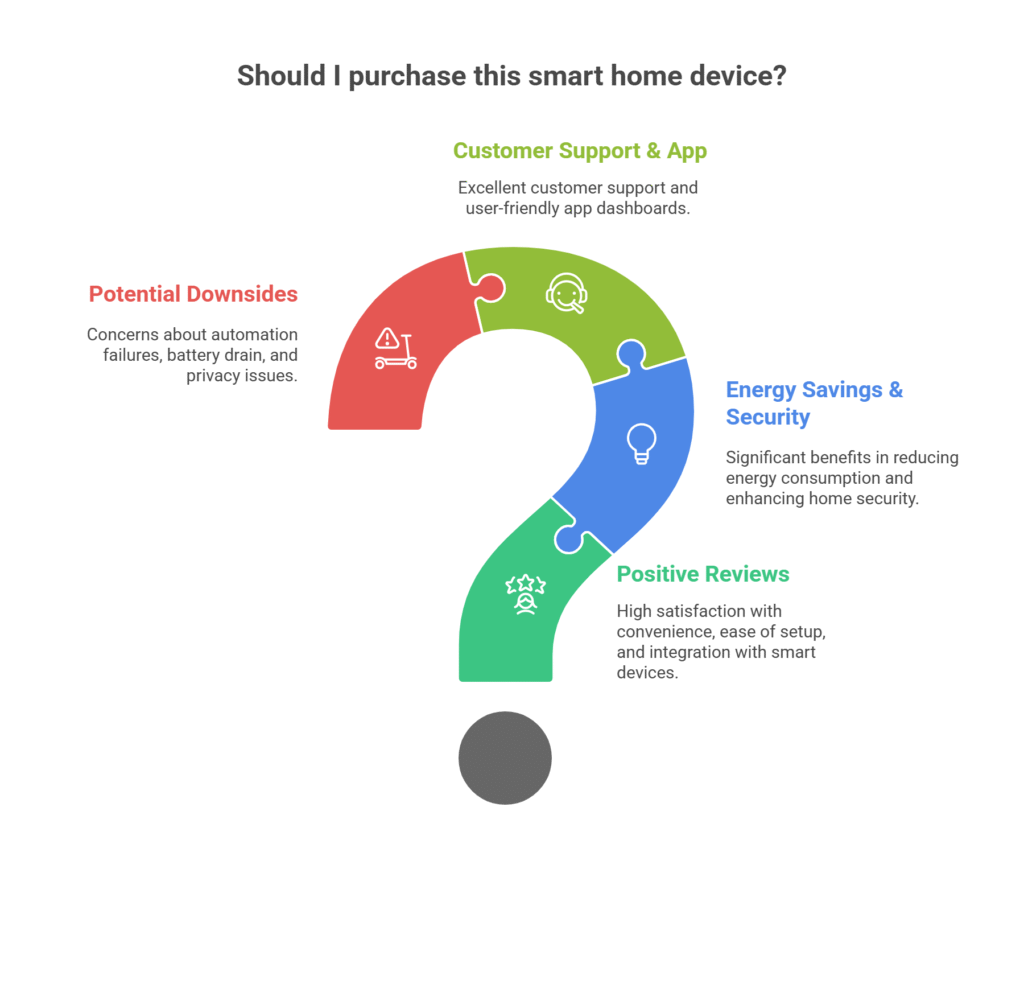
📈 Geo-Fencing User Ratings: Visual Insights
User Ratings Breakdown
| 5 Stars | 4 Stars | 3 Stars | 2 Stars | 1 Star | |
|---|---|---|---|---|---|
| % | 65% | 20% | 10% | 3% | 2% |
The top things people love? Reliable automation and saving on energy. Search issues rarely come up, but if you do need help, there’s plenty out there since these platforms are so popular.
Sentiment analysis shows about 80% of users are happy—mostly because of time savings and how smoothly things work. About 10% mention privacy or battery stuff, and only a few complain about tech glitches.
⚖️ Pros and Cons of Geo-Fencing vs Other Smart Features
Adding geo-fencing to your home setup brings practical perks: lights that turn themselves off, lower energy bills, and better security. Of course, there are a few trade-offs—battery use, privacy, and whether your devices play nicely with Alexa, Google, or iOS are the main things people compare to other smart home options.
📌 Quick Geo-Fencing Pros and Cons Summary
Pros
✓ Geo-fencing turns your smart devices on or off based on where you are, so you don’t have to think about it.
✓ Works with big platforms—Alexa, Google Assistant, Apple HomeKit.
✓ Saves energy by making sure lights and heat aren’t running when you’re not home.
✓ Helps with security by faking occupancy or letting you know if someone comes or goes.
✓ Most apps are free, and you can often add hardware to what you already have.
Cons
✗ Always-on location tracking can drain your phone battery.
✗ Some folks don’t love the idea of sharing their location with tech companies.
✗ Setup steps aren’t always the same across Alexa, Google, and iOS, which can be a little confusing.
✗ Sometimes automations miss a beat—like if your phone loses signal.
✗ If your internet goes down, some things might not work.
📋 Which Platform Handles Geofencing Best? (Alexa vs Google vs HomeKit vs IFTTT)
Here’s a quick table comparing some of the top smart home geo-fencing options, along with which users they tend to suit best.
| 🛠️ Product | ⭐ Best For | ⚡ Key Feature | ⚠️ Weak Point | 🔌 Compatibility |
|---|---|---|---|---|
| Alexa Routines | Amazon device users | Deep Echo integration | Setup can get confusing | iOS, Android, Alexa |
| Google Home/Assistant | Google ecosystem | Voice & app trigger controls | App can be unreliable | iOS, Android, Google |
| Apple HomeKit | Apple device owners | Strong iOS privacy controls | Hardware is pricey | iOS, HomeKit |
| IFTTT with Sensors | DIY & Integrators | Works with many brands | Sometimes lags | Multi-platform |
Affiliate marketers might notice that some platforms offer higher commission rates through programs like ShareASale when promoting these products. Worth checking if you’re in that space.
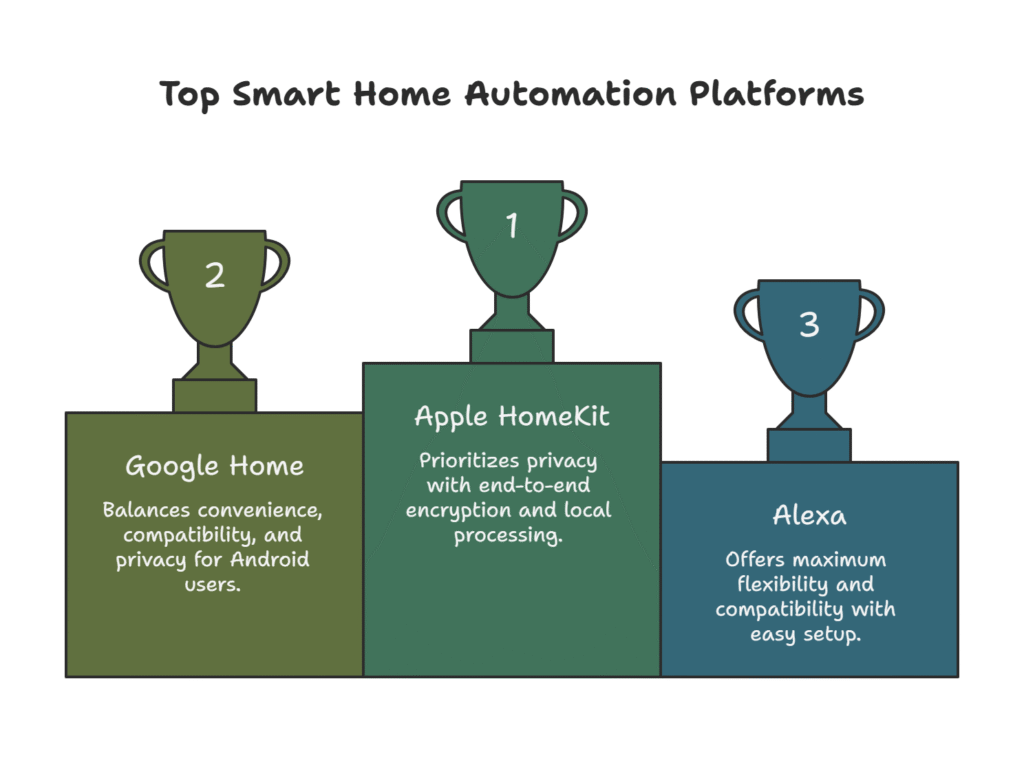
If you’re building a smart home, you’ve got four major automation platforms to choose from. Each offers different strengths depending on your priorities: device compatibility, ease of use, privacy, or customization.
| 🧭 Platform | 🛡️ Reliability | 🛠️ Setup | 📱 App | 🔒 Privacy | 🔌 Compatibility | 💲 Pricing | ⭐ Ideal For |
|---|---|---|---|---|---|---|---|
| Amazon Alexa |
4/5
Cloud-powered, generally consistent.
|
5/5
Very beginner-friendly and fast.
|
4/5
Powerful but a bit cluttered.
|
2/5
Heavily cloud-based; basic options.
|
5/5
Widest range of devices.
|
5/5
No monthly fees; affordable hardware.
|
Anyone wanting max flexibility, compatibility, and easy setup. |
| Google Home |
4/5
Stable cloud performance; routines improving.
|
5/5
Smooth, especially with Android/Nest.
|
4/5
Clean design; editor improving.
|
3/5
Better than Alexa, still cloud-based.
|
4/5
Wide support, strong Matter integration.
|
5/5
No platform fees; hardware often discounted.
|
Android users & Google fans who want easy voice control and solid privacy. |
| Apple HomeKit |
5/5
Runs locally; very dependable.
|
4/5
Seamless for Apple users.
|
5/5
Clean, intuitive; built into iOS.
|
5/5
End-to-end encrypted; local-first.
|
3/5
Apple-only; fewer accessories.
|
3/5
Pricier hardware; no recurring fees.
|
Privacy-focused Apple households wanting tight ecosystem integration. |
| IFTTT |
3/5
Can lag; depends on multiple clouds.
|
4/5
Simple interface; many applets.
|
3/5
Basic, logic-focused layout.
|
2/5
Connects multiple third-party accounts.
|
5/5
Supports 650+ services.
|
4/5
Free tier; Pro for faster/more automations.
|
Tinkerers linking smart gear with web services or cross-platform flows. |
Last update on 2025-11-12 / Affiliate links / Images from Amazon Product Advertising API
⭐Smart Home Platform Comparison
| 🛠️ Platform | ⚡ Reliability | ⚙️ Setup | 📱 App | 🔒 Privacy | 🔌 Compatibility | 💲 Pricing | ⭐ Best For |
|---|---|---|---|---|---|---|---|
| Amazon Alexa | Maximum compatibility & routines | ||||||
| Google Home | Android/Google ecosystem users | ||||||
| Apple HomeKit | Apple users prioritizing privacy | ||||||
| IFTTT | DIY power users & multi-platform setups |
⭐ Smart Home Automation Platforms at a Glance
| ⚙️ Feature | 🟦 Amazon Alexa | 🟥 Google Home | 🍏 Apple HomeKit | 🔗 IFTTT |
|---|---|---|---|---|
| Automation Reliability | Cloud-based, stable | Reliable, stable | Local execution possible | Slower, cloud delays |
| Ease of Setup | Plug & play | Intuitive & quick | Seamless for Apple users | Easy with templates |
| App Interface | Powerful but busy | Clean, needs clicks | Clean, native iOS UI | Basic, logic-based |
| Privacy Controls | Cloud-reliant | Better than Alexa | End-to-end encrypted | Data sharing risk |
| Platform Compatibility | Works with most devices | Broad support | Apple-only, limited devices | Supports 650+ services |
| Pricing | Affordable, no fee | Low-cost, no fee | Costly hardware, iPhone needed | Free/Pro subscription |
Which Should You Choose?
- Apple fans: HomeKit is best for privacy and seamless Apple integration.
- Android or Google users: Go with Google Home for smooth syncing and wide support.
- Mixed-device users: Choose Alexa for top compatibility and smart routines.
- DIY power users: Use IFTTT to connect everything creatively across ecosystems.
Final word: All four can build a capable smart home. Your best pick depends on how much you value privacy, integration, automation power, or device freedom.
🤔 Which Smart Home Gadget Should You Choose?
| Best For | Our Pick | Shop |
|---|---|---|
| Budget & Beginners | Kasa Smart Plug | Buy |
| Best for Families | August Smart Lock | Buy |
| Best for Ambience | Philips Hue Kit | Buy |
✅ Is Smart Home Geofencing Right for You? Quick Checklist
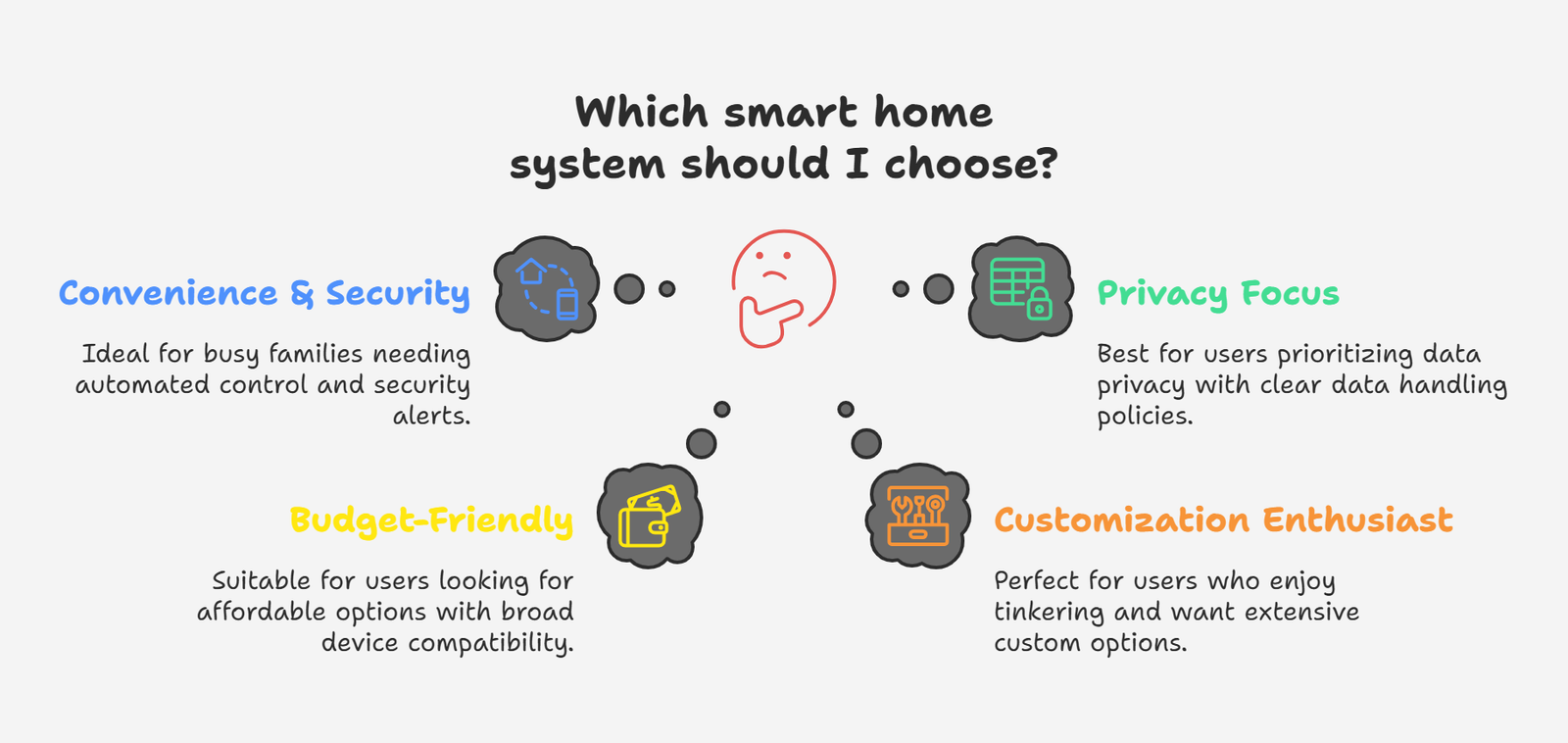
Smart home geofencing is ideal for anyone who wants hands-off home control. Whether you prefer geofencing smart home routines in Alexa, Google Home, or Apple HomeKit, location-based automation adds real convenience, energy savings, and security. If you’re juggling a busy family, automated lights and heating are a game changer. People who care about security will appreciate automatic alerts, too.
If privacy is a big deal for you, Apple HomeKit’s probably your best bet since they’re clearer about what they do with your data. On the other hand, if you’re watching your budget, Alexa or Google make it easier to get started and work with more devices.
If you’re the kind of person who loves tinkering or wants all the features, combining IFTTT with a bunch of smart sensors opens up a lot of custom options. In the end, matching the right product with your daily routine is what gets you the most out of these affiliate recommendations.
❓ Geofencing Smart Home FAQ: Everything You Need to Know
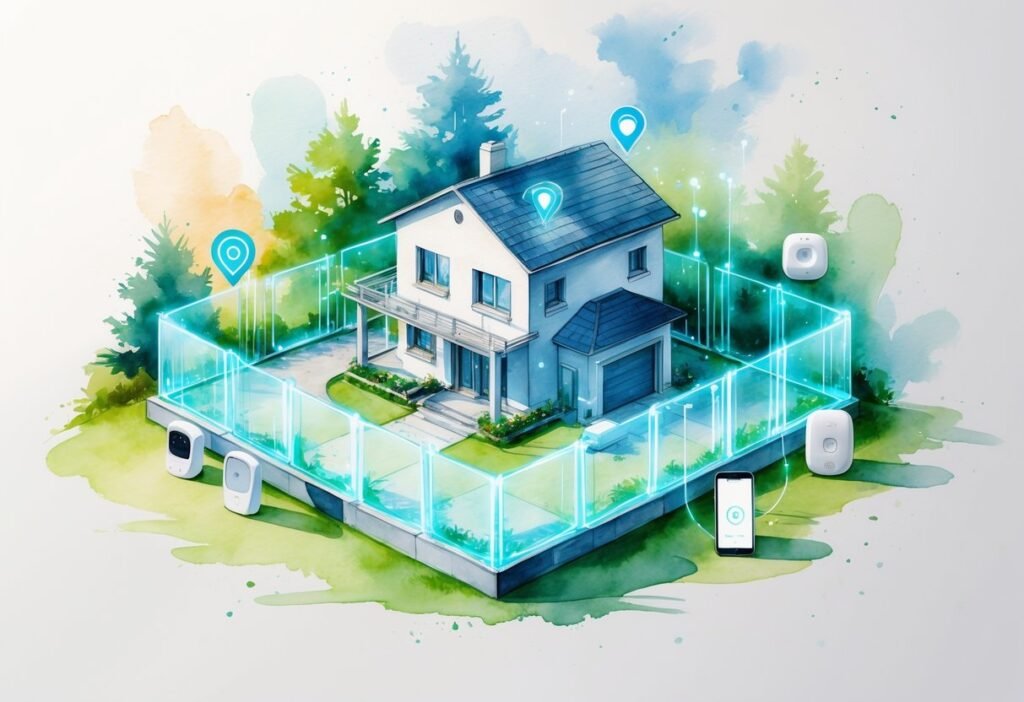
Geofencing lets your smart home react automatically to where you are. It can make life easier, save energy, and boost security. Still, battery life and privacy are things to keep in mind, but there are ways to manage both.
How can geofencing improve home automation systems like lighting and security?
With geofencing, your devices know when you come and go. So, lights can turn on as you arrive or the security system can arm itself when you leave. It’s less hassle and can even make your home look lived-in, which might help deter break-ins.
Lights can shut off after the last person leaves, and heating or AC can adjust based on who’s home. That means you save energy and stay comfy without much thought.
What are the steps to set up geofencing in smart home devices using platforms like Alexa or Google Home?
Setting up geofencing is usually pretty simple. Open your smart home app (Alexa, Google Home, Apple Home, etc.), and make sure location permissions are turned on for your phone. Then, create a routine that reacts to your location.
Pick a trigger, like “arrive at home” or “leave home.” Choose what you want to happen—turn on lights, adjust the thermostat, whatever fits. Save it, and let the app run in the background for best results.
In what ways does geofencing technology impact battery life and how can these issues be mitigated?
Location tracking can use up your phone’s battery, especially if it’s always running GPS. Some apps try to save battery by using Wi-Fi or cell towers instead of GPS all the time.
To help your battery last longer, set location access to “only while using the app” and close other apps that use your location. Some platforms also check your location less often if your phone isn’t moving, which helps too.
What privacy concerns should be considered when implementing geofencing solutions, and how can they be addressed?
Geofencing apps usually need regular access to your location, which can raise questions about data privacy. If the data isn’t protected, it could be at risk.
To be safer, check privacy policies before turning on geofencing. Stick with trusted apps, keep everything updated, and only give the permissions that are really needed. Turning off geofencing when you’re not using it also limits what’s shared.
How is geofencing being utilized in vehicle technology and what benefits does it provide?
Cars now use geofencing to set up safe zones. You can get alerts if your car leaves a certain area. For example, parents can know if a teen driver goes outside a set boundary, which is great for peace of mind.
For businesses, fleet managers use geofencing to track vehicles, automate check-ins, and improve routes. It helps keep tabs on company cars and cuts down on unauthorized use.
What are some innovative examples of geofencing applications across different industries?
Retail stores often use geofencing to send coupons or quick notifications to shoppers right as they walk in. It’s a clever way to catch people’s attention at just the right moment. In healthcare, hospitals rely on geofencing to keep track of equipment and staff—honestly, it’s pretty handy when you need to know where things (or people) are in a hurry.
On construction sites, geofencing helps keep workers safe by warning them if they get too close to dangerous or off-limits areas. For public safety, services can even unlock or lock facility doors automatically for first responders as soon as they show up at an emergency. That’s the kind of small detail that can make a big difference.
Does geo-fencing work without Wi-Fi?
Yes, geo-fencing can work using GPS or mobile data, but Wi-Fi enhances accuracy and reduces battery usage. Most smart home platforms recommend enabling Wi-Fi for best results.
Can renters use geo-fencing in smart homes?
Absolutely. Geo-fencing doesn’t require rewiring or permanent installation. Renters can use mobile apps like Alexa or Google Home to set up routines using location triggers.
What smart plugs support geo-fencing?
Many Wi-Fi smart plugs work with Alexa or Google routines that support geo-fencing. Examples include Kasa Smart Plug and TP-Link Mini, both beginner-friendly and affordable.
Is geo-fencing safe for home privacy?
Yes, if you use trusted platforms like Apple, Google, or Amazon. Always check app permissions and turn off location tracking when not in use for extra privacy protection.
Why isn’t my geo-fencing routine triggering?
It could be due to GPS signal loss, app permissions, or battery optimizations. Make sure location access is always on and your smart home app is running in the background.
Can geo-fencing work with multiple users?
Yes, platforms like Apple HomeKit and Google Home allow multiple user triggers. You can set up automations based on different people’s phones crossing the geo-fence.
Which platform is best for geo-fencing automation?
Apple HomeKit offers strong privacy, Google Home is easy to use, and Alexa offers deep Echo integration. Choose based on the devices you already own.
You might also like to read
- Frustrated? Voice Assistant Troubleshooting Made Easy→ when discussing setup issues or missed geofence triggers.
- Smart Home Overkill: Avoiding Automation Burnout→ near the “Pros & Cons of Geo-Fencing vs Other Smart Features” section.
- Best Smart Home Hubs 2025 – Reviews, Features & Comparisons → in the platform comparison section (Alexa, Google, HomeKit, IFTTT).
- Budget Smart Home: A Beginner’s Easy Setup Guide → in beginner-friendly setup steps section.
- Unlock Easy Wins: Automate Non-Smart Appliances→ when mentioning plugs and adapters (Kasa, TP-Link).

